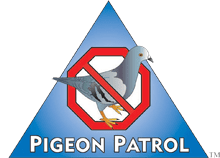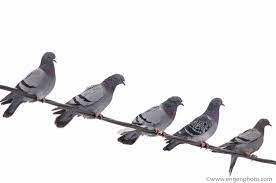
by Pigeon Patrol | Jun 7, 2021 | pet bird, Pigeon Control, Pigeon Droppings, Pigeon Patrol's Services, Pigeon Spikes, Pigeons, Pigeons in the News
Iron crystals in their beaks give birds a nose for north.
It’s official: homing pigeons really can sense Earth’s magnetic field. An investigation of their ability to detect different magnetic fields shows that their impressive navigation skills almost certainly relies on tiny magnetic particles in their beaks.
The discovery seems to settle the question of how pigeons (Columba livia) have such an impressive ‘nose for north’. Some experts had previously suggested that the birds rely on different odour cues in the atmosphere to work out where they are. But the latest findings suggest that they are using magnetic cues.
The idea that pigeons’ beaks contain tiny particles of an iron oxide called magnetite is not a new one, says Cordula Mora, who led the latest study at the University of Auckland, New Zealand. But the particles themselves are likely to be only a few micrometres across, and no one has ever seen them under the microscope.
Mora’s behavioural experiments therefore give the best indication yet that pigeons are aware of Earth’s magnetic field. She and her colleagues taught the pigeons to discriminate between magnetic fields by placing them in a wooden tunnel with a feeder platform at either end and coils of wire around the outside.

The pigeons were trained to go to one end of the tunnel if the coils were switched on, generating a magnetic field, and to the other if they were switched off, leaving Earth’s natural field unperturbed. “I was pleasantly surprised. The pigeons were very fast learners,” says Mora, now at the University of North Carolina in Chapel Hill.
Their skills were impaired, however, when the researchers attached magnets to their upper beaks, and also when the upper beak was anaesthetized. This suggests that their ability is down to the presence of magnetically sensitive material in this area, the researchers report in this week’s Nature1.
The team then set about seeing how these magnetic signals might be transmitted to the birds’ brains. When they severed the ophthalmic branch of the trigeminal nerve, which leads from the upper beak to the brain, the birds were unable to distinguish between natural and perturbed magnetic fields. But when the olfactory nerve, which carries smell signals, was cut instead, the birds performed fine, dealing a seemingly fatal blow to the idea that they navigate by relying on odours.
The results sit well with previous studies of another impressive navigator, the rainbow trout. The species both seem to have a system in which signals from magnetite particles are carried from the nose to the brain by the trigeminal nerve, says Mora. This is not surprising, she says, as iron-containing materials are common in many animals’ bodies.
So why has nobody seen the particles? Other researchers are looking for them, Mora says. But the problem is that even though we know where to look, they are elusive because of their small size and the fact that many other biological materials, such as blood, contain iron.
The particles are small because there’s no reason why they should be any larger, Mora adds. “You don’t need a large receptor structure like you do for the eye, because the magnetic field permeates everything,” she says. “It’s like a needle in a haystack.”
Source
Pigeon Patrol Products & Services is the leading manufacturer and distributor of bird deterrent (control) products in Canada. Pigeon Patrol products have solved pest bird problems in industrial, commercial, and residential settings since 2000, by using safe and humane bird deterrents with only bird and animal friendly solutions. At Pigeon Patrol, we manufacture and offer a variety of bird deterrents, ranging from Ultra-flex Bird Spikes with UV protection, Bird Netting, 4-S Bird Gel and the best Ultrasonic and audible sound devices on the market today.
Voted Best Canadian wholesaler for Bird Deterrent products ten years in a row.
Contact us at 1- 877– 4– NO-BIRD, (604) 585-9279 or visit our website at www.pigeonpatrol.ca
Pigeon/Pigeon Patrol / Pigeons Roosting / Vancouver Pigeon Control /Bird Spikes / Bird Control / Bird Deterrent / Pigeon Deterrent? Surrey Pigeon Control / Pest /Seagull deterrent / Vancouver Pigeon Blog / Birds Inside Home / Pigeons in the cities / Ice Pigeons/ What to do about pigeons/ sparrows , Damage by Sparrows, How To Keep Raccoons Away, Why Are Raccoons Considered Pests/ De-fence / Pigeon Nesting/ Bird Droppings / Pigeon Dropping/ woodpecker control/ Professional Bird Control Company/ Keep The Birds Away/ Birds/rats/ seagull/pigeon/woodpecker/ dove/sparrow/pidgeon control/pidgeon problem/ pidgeon control/flying rats/ pigeon Problems/ bird netting/bird gel/bird spray/bird nails/ bird guard
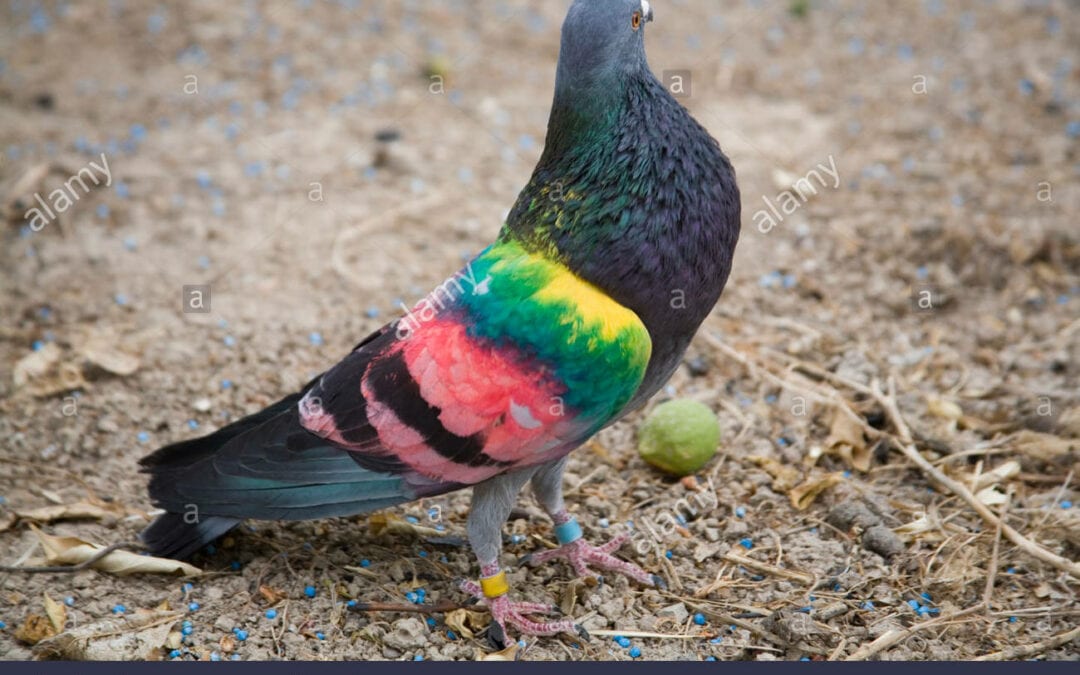
by Pigeon Patrol | Jun 7, 2021 | Animal Deterrent Products, Bird Deterrent Products, pet bird, Pigeon Control, Pigeon Droppings, Pigeon Patrol's Services, Pigeon Spikes
They peck at the pavement; they coo overhead; they swoop in hundreds across town squares: Pigeons have become such a permanent fixture in our urban landscapes that cities would seem oddly vacant without them.
But while many people harbor resentment for these ubiquitous creatures — labeling them “rats with wings” — few of us stop to ponder how pigeons became so numerous in the first place, and what our own role in their urban colonization might be.
Today, in fact, there are more than 400 million pigeons worldwide, most of which live in cities. But that wasn’t always the case. The city pigeons we know today are actually descended from a wild creature known as the rock dove (Columba livia): As its name suggests, this bird prefers a rocky coastal cliff habitat to the conveniences of city life. [Why Are Chickens So Bad at Flying?]
But going as far back as 10,000 years ago, written and fossil records show that people living in ancient Mesopotamia (modern-day Iraq) and Egypt began coaxing these doves with food into human-inhabited areas, encouraging them to roost and breed on their land. “Back then, we brought rock doves into cities to eat as livestock,” Steve Portugal, a comparative ecophysiologist who studies bird flight and behavior, told Live Science. The plump, young birds especially — known as “squabs” — became a prized source of protein and fat. People then began domesticating and breeding the birds for food, creating subspecies that led to the diversity of urban pigeons known today.
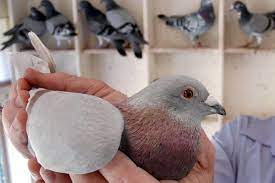
Along the way, humans began to realize that pigeons were useful for much more than their meat. As the birds grew more popular in the Middle East, North Africa and Western Europe in the ensuing centuries, people began to tap into their innate talent for navigation — the same skill that makes homing pigeons famous today. Ancient records show that Mediterranean sailors used the birds to point floundering ships toward land. In cities, they became increasingly valuable as airborne messengers that could deliver important information across large distances.
From there, humanity’s appreciation for the animals only grew: Although pigeons were initially domesticated as a food source, “as other poultry became more popular, pigeons fell out of favor for eating and people began breeding them as a hobby,” said Elizabeth Carlen, a doctoral student at Fordham University in New York City who studies the evolution of urban pigeons.
By the 1600s, rock doves — non-native to the United States — had reached North America, transported by ships in the thousands. Rather than being a food source, it’s most likely that the birds were brought across from Europe to satiate the growing pigeon-breeding trend among hobbyists, said Michael Habib, a paleontologist in the Dinosaur Institute at the Los Angeles County Museum of Natural History, and the University of Southern California.
Inevitably, birds escaped captivity, and began to breed freely in American cities. “We created this novel [urban] habitat and then we basically engineered an animal that does very well in that novel habitat,” Habib told Live Science. “They were successful in cities because we engineered them to be comfortable living around humans.” [Do Birds Really Abandon Their Chicks If Humans Touch Them?]
Cities became the perfect backdrop for the pioneering pigeons’ success. “Pigeons are naturally cliff-dwellers and tall buildings do a pretty great job at mimicking cliffs,” Carlen told Live Science. “Ornate facing, window sills and air-conditioning units provide fantastic perches for pigeons, similar to the crevices found on the side of a cliff.”
Another trait that makes pigeons more adaptable is their appetite. While other bird species have to rely on supplies of berries, seeds and insects, pigeons can eat just about anything that humans toss in the trash. “Other species are specialists and pigeons are the ultimate generalists,” Portugal said. “And the food is endless: I don’t think too many pigeons go to bed hungry!”
The pigeon’s unusual breeding biology seals the deal: Both parents rear their chicks on a diet of special protein- and fat-rich milk produced in a throat pouch called the crop. So, instead of having to rely on insects, worms and seeds to keep their young alive — resources that would be scarcer in cities — pigeons can provide for their offspring no matter what, Portugal says: “As long as the adults can eat, they can feed their babies, too.”
All these traits give pigeons a competitive edge compared with other species that might attempt survival in cities. Combined with the pigeon’s prolific breeding habits (parents can produce up to 10 chicks a year), it’s easy to see why these birds have become so populous around the world.
Not everyone appreciates the urban phenomenon that these birds have become — hence the “rat with wings” moniker. That’s understandable to some extent: Pigeons can spread diseases, and the mounds of guano they splatter across buildings can be cumbersome and costly to clean.
Despite this, Portugal sees a benefit to their presence in our urban environments. “They’re actually one of the few bits of wildlife that people get to interact with in cities now,” he said. What’s more, “they’re super-adaptable and super-successful; they’re the ultimate survivors. Actually, we can learn a lot from them.”
Source
Pigeon Patrol Products & Services is the leading manufacturer and distributor of bird deterrent (control) products in Canada. Pigeon Patrol products have solved pest bird problems in industrial, commercial, and residential settings since 2000, by using safe and humane bird deterrents with only bird and animal friendly solutions. At Pigeon Patrol, we manufacture and offer a variety of bird deterrents, ranging from Ultra-flex Bird Spikes with UV protection, Bird Netting, 4-S Bird Gel and the best Ultrasonic and audible sound devices on the market today.
Voted Best Canadian wholesaler for Bird Deterrent products ten years in a row.
Contact us at 1- 877– 4– NO-BIRD, (604) 585-9279 or visit our website at www.pigeonpatrol.ca
Pigeon/Pigeon Patrol / Pigeons Roosting / Vancouver Pigeon Control /Bird Spikes / Bird Control / Bird Deterrent / Pigeon Deterrent? Surrey Pigeon Control / Pest /Seagull deterrent / Vancouver Pigeon Blog / Birds Inside Home / Pigeons in the cities / Ice Pigeons/ What to do about pigeons/ sparrows , Damage by Sparrows, How To Keep Raccoons Away, Why Are Raccoons Considered Pests/ De-fence / Pigeon Nesting/ Bird Droppings / Pigeon Dropping/ woodpecker control/ Professional Bird Control Company/ Keep The Birds Away/ Birds/rats/ seagull/pigeon/woodpecker/ dove/sparrow/pidgeon control/pidgeon problem/ pidgeon control/flying rats/ pigeon Problems/ bird netting/bird gel/bird spray/bird nails/ bird guard
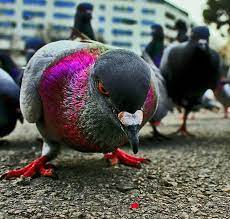
by Pigeon Patrol | Jun 7, 2021 | Bird Law, Bird Netting, Bird Spikes, Pigeon Spikes, Pigeons, Pigeons in the News
Last September, as part of Twitter’s #PoweredByTweets exhibition at Somerset House in the UK, a proposal called ‘Pigeon Patrol’ was presented. The idea was this: armed with pollution monitors in tiny backpacks, pigeons would Tweet live pollution data from the skies of London.
It seems a little far-fetched – I mean, a pigeon can’t actually tweet, obviously – but the concept was one of the standouts of the competition. And now, ‘Pigeon Patrol’ is officially live, with a team of flying pollution monitors at work, tweeting back data from around the city.

“Over the course of three days, Plume Labs (@Plume_Labs) and DigitasLBi (@DigitasLBi_UK) will release ten pigeons wearing small pollution-monitoring backpacks. These lightweight pollution sensors, created by Plume, are stitched onto small fabric vests which fit comfortably on the pigeons and measure levels of nitrogen dioxide and ozone, the main gases behind harmful urban air pollution.”
The idea is one of the more interesting and innovative ways of using Twitter data, and it underlines the capacity of the platform as a real-time news and update service. Pigeon Patrol was one of several ideas to spark new conversations around how Twitter can be used for such purpose – others included Guys and St Thomas’ Hospital, which created a chemotherapy ward with Tweet-powered visualizations and WaterAid, which developed a water pump that Tweeted donors with live updates of where their money was going.
It’s in that capacity for real, immediate updates that Twitter holds such great value and potential. And it’s not just in terms of world events and breaking news – the more intimate and geographically targeted Twitter alerts and tracking can be the better. We’ve already seen examples of how tweets can be used to better predict earthquakes or map the path of destruction from hurricanes. Imagine if you could use tweets to get a better understanding of local traffic concerns as they happen, to track petrol prices or supermarket offers nearby? These are relatively basic, by comparison, but the underlying principle is that Twitter’s real-time stream is extremely valuable for such purpose – more so than the algorithm defined News Feed of Facebook.
The main requirement for such application, of course, is Twitter use – more people using the platform means more data, which, again, is why Twitter’s current growth issues flag a concern for the ongoing viability of the service. Right now, Twitter’s used by enough people to be an indicative measure of most large-scale events. But micro-trends – those smaller, localized alerts – would require higher concentrations of local users in order to be effective. There are examples of this type of process in action – in Spain, the town of Jun is effectively governed via tweet, for example – and as the next generation of digital natives grows up, Twitter use is likely to become more prominent. But the issue does underline, once again, why Twitter needs more people tweeting, and why ongoing growth is such a big focus for the platform.
For now, we’ll have to settle for pollution tracking pigeons, flying around London in teams of 10 and tweeting back updates.
Source
Pigeon Patrol Products & Services is the leading manufacturer and distributor of bird deterrent (control) products in Canada. Pigeon Patrol products have solved pest bird problems in industrial, commercial, and residential settings since 2000, by using safe and humane bird deterrents with only bird and animal friendly solutions. At Pigeon Patrol, we manufacture and offer a variety of bird deterrents, ranging from Ultra-flex Bird Spikes with UV protection, Bird Netting, 4-S Bird Gel and the best Ultrasonic and audible sound devices on the market today.
Voted Best Canadian wholesaler for Bird Deterrent products ten years in a row.
Contact us at 1- 877– 4– NO-BIRD, (604) 585-9279 or visit our website at www.pigeonpatrol.ca
Pigeon/Pigeon Patrol / Pigeons Roosting / Vancouver Pigeon Control /Bird Spikes / Bird Control / Bird Deterrent / Pigeon Deterrent? Surrey Pigeon Control / Pest /Seagull deterrent / Vancouver Pigeon Blog / Birds Inside Home / Pigeons in the cities / Ice Pigeons/ What to do about pigeons/ sparrows , Damage by Sparrows, How To Keep Raccoons Away, Why Are Raccoons Considered Pests/ De-fence / Pigeon Nesting/ Bird Droppings / Pigeon Dropping/ woodpecker control/ Professional Bird Control Company/ Keep The Birds Away/ Birds/rats/ seagull/pigeon/woodpecker/ dove/sparrow/pidgeon control/pidgeon problem/ pidgeon control/flying rats/ pigeon Problems/ bird netting/bird gel/bird spray/bird nails/ bird guard
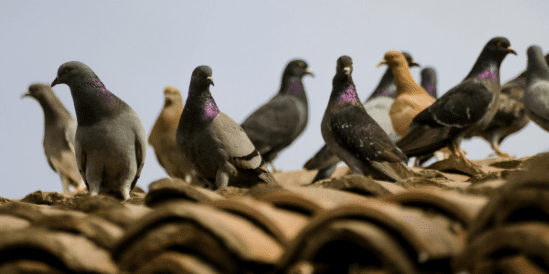
by Pigeon Patrol | May 31, 2021 | Animal Deterrent Products, Bird Deterrent Products, Bird Law, Bird Netting, Pigeon Patrol's Services, Pigeon Predators, Pigeon Spikes
A thick layer of bird droppings that have built up over the last decade from pigeons living in the broken Christ Church Cathedral will end up in landfill instead of being recycled into fertiliser.
Up to two tonnes of pigeon poo has accumulated since the devastating February 2011 earthquake.
Christ Church Cathedral Reinstatement project director Keith Paterson said the pigeons were “a bit of liability” and certainly not their “best friends”.
Few people have entered the building since the quake, but drones gave the reinstatement group an estimate of how much damage the pigeons had caused.
The project team aimed to reuse as much of the building material as possible.
Paterson estimated about half of the material would be reused to finish the reinstated cathedral, but much of the rubble inside would be too damaged.
Christchurch consultancy Soil Matters, which turns waste products from the dairy industry into fertiliser, was approached last year with the idea of potentially recycling the tonnes of pigeon droppings and broken limestone into something useful.

General manager Rik Mulder said his team came up with the idea last June to recycle nutrients including nitrogen, phosphorous and calcium containedin the pigeon droppings and limestone, once they had been tested and deemed safe.
The company had planned to crush the limestone and pigeon droppings to a fine powder and apply it to paddocks in local North Canterbury farms.
But the company learned it would need a resource consent for the crushing process, which the reinstatement group said would be too costly and take too long to obtain.
It led to the decision to dispose the material through “a more conventional solution”, using contractors to take it to landfill.
“I don’t rate the [environmental] sustainability any more highly than I do the cost or the heritage requirements,” Paterson said.
“They’re all just things that are there that we have to process and do in the most economical way.”
Mulder said he understood the reinstatement group had to make a call, but felt the lengthy process of obtaining a resource consent stopped innovative thinking.
“Shutting down” such projects did not encourage people to think sustainably and “outside the box”, he said.
“We are restrained in our efforts to try new things.”
Environment Canterbury (ECan) consent planning manager Aurora Grant said a consent was required because the pigeon droppings and limestone were classified as a contaminant.
Having a consent would allow ECan to understand the “effects of the activity and ensure the proposed activity is done in a way that has environmentally sustainable outcomes”.
Pathways existed to allow innovative and sustainable use of resources and not many were prohibited in the regional plans, she said.
The $153 million cathedral restoration is expected to be finished by mid-2027, earlier than initially proposed. The project, which began in late 2018, was initially expected to be completed in early 2028.
But on Thursday Stuff revealed the Anglicans’ ruling body may have to change its approval terms for the restoration to avoid work stopping in October if more funds cannot be found.
Workers are currently stabilising the cathedral to make it safe enough to work on.
The clean-up process will start with remote controlled machines going into the ruins to start removing bigger pieces of material, expected to start in October.
It will be another six to 12 months before anyone can go inside.
“We’re constantly reassessing how we’ll access the building from a safety perspective,” Paterson said.
By the end of the stabilisation stage, Paterson said the building would be about 34 per cent of the current seismic building code.
Source
Pigeon Patrol Products & Services is the leading manufacturer and distributor of bird deterrent (control) products in Canada. Pigeon Patrol products have solved pest bird problems in industrial, commercial, and residential settings since 2000, by using safe and humane bird deterrents with only bird and animal friendly solutions. At Pigeon Patrol, we manufacture and offer a variety of bird deterrents, ranging from Ultra-flex Bird Spikes with UV protection, Bird Netting, 4-S Bird Gel and the best Ultrasonic and audible sound devices on the market today.
Voted Best Canadian wholesaler for Bird Deterrent products ten years in a row.
Contact us at 1- 877– 4– NO-BIRD, (604) 585-9279 or visit our website at www.pigeonpatrol.ca
Pigeon/Pigeon Patrol / Pigeons Roosting / Vancouver Pigeon Control /Bird Spikes / Bird Control / Bird Deterrent / Pigeon Deterrent? Surrey Pigeon Control / Pest /Seagull deterrent / Vancouver Pigeon Blog / Birds Inside Home / Pigeons in the cities / Ice Pigeons/ What to do about pigeons/ sparrows , Damage by Sparrows, How To Keep Raccoons Away, Why Are Raccoons Considered Pests/ De-fence / Pigeon Nesting/ Bird Droppings / Pigeon Dropping/ woodpecker control/ Professional Bird Control Company/ Keep The Birds Away/ Birds/rats/ seagull/pigeon/woodpecker/ dove/sparrow/pidgeon control/pidgeon problem/ pidgeon control/flying rats/ pigeon Problems/ bird netting/bird gel/bird spray/bird nails/ bird guard

by Pigeon Patrol | May 25, 2021 | Bird Law, Bird Spikes, Doves, Pigeon Spikes, Pigeons
Most of the pigeons you see around a city, building, bridge, billboard or other structure, are pigeons that were born and raised close by. A few may be “vagrants” and constantly on the move, but most of them are going to be your neighborhood pigeons that will be nesting and breeding near to where you see them if food and water is close by.
Feral pigeons (Columbia livia) are the number one urban pest bird, causing damage where ever they nest or roost. Pigeons are descendants of domesticated European homing pigeons or Rock Doves, so they have a varied diet and feel at ease making their homes in man-made structures. Generally blue-grey in color, with iridescent feathers on the head and neck, pigeons often have markings in black, white or brown on the wings and neck. A short neck and small head characterize the standard pigeon; their short legs, hind toes and level front allow for both easy perching on pipes and ledges or walking on flat surfaces. Pigeons generally nest in small, flat areas away from the ground such as building ledges, air conditioning units or window sills.
Pigeons will inhabit any area that will offer them shelter from the climate, for example: architectural features of buildings, lofts, church steeples, attics, and any place with openings that allow for roosting, loafing, and nesting. Pigeon nests consist of twigs, sticks, and grass clumped together to form a platform. Pigeons are monogamous birds. “Eight to twelve days after mating, the female will lay 1 or 2 eggs which hatch after approximately 18 days. The male, during this time, is providing nesting material and guards the female and the nest.” When pigeons are born, they feed on pigeon milk which is “a liquid/solid substance secreted in the crop of both adults that is regurgitated” into the mouths of the young pigeons. Most young leave the nest at approximately 4 to 6 weeks of age. During this time another batch of eggs may have already been laid. Breeding most commonly occurs during the spring and fall, but reproduction can occur all year long. A flock of pigeons will normally have an equal amount of males and females. A pigeon’s normal lifespan in nature is about 3 to 4 years.
A pigeon can go, if necessary, a long time without food or even water. Most birds need a constant water source and that they will visit every day. Pigeons are skilled in finding water and food sources, and rarely have trouble finding a source in the city. Individual pigeons can have a home range of 150 miles, although most will stay close to home, which is generally considerably less than 25 miles or so. If their food and water sources change drastically, however, they will migrate, to another spot, near or far, with better provisions.
Damage caused by Pigeon Problems
Pigeon control is important due to the damage and disease problems these birds often create, check out Health Risk page. The uric acid in pigeon feces is highly corrosive and can cause extensive damage to metals and other substrates it sits on for long periods. Debris from flocks of problem pigeons often build up, backing up gutters and drains which can cause flooding and roof damage. Nesting materials and other debris has caused failures in machinery, especially rooftop air conditioning units which are a prime nesting spot for pigeons. Other frequent pigeon problems include slip and fall liability from feces or debris, plus an unclean, dirty company image is presented when pigeons are roosting all over a building or store front sign. The bacteria, fungal agents and ectoparasites found in pigeon droppings are responsible for a host of serious diseases, including histoplasmosis, encephalitis, salmonella, meningitis, toxoplasmosis and more. Pigeons also carry ectoparasites for example: fleas, lice, mites, ticks, and other biting pests. Many companies have significant clean up costs due to the pigeon problems that they don’t resolve. The pigeons that are located around airports threaten human safety due to a possible bird-aircraft collision. The U.S. Air Force considers pigeons as a medium priority hazard to jet aircrafts.
FLYING RATS ?
In today’s world, the common structure-dwelling pigeons have become the avian equivalents of city rodents. “Flying Rats,” as they have been described. Unfortunately, they have been forced into this role by man, as much as by their own natural instincts and habits. First and foremost to the problem of overpopulation, are the numbers of nooks and crannies that modern man builds into the exterior of all of his structures, forming the basic nesting home sites for pigeons and other birds. This means that almost every house, commercial building, bridge, billboard, gas canopy, or other large structure harbors a number of these potential nest or roosting sites. Bad for us, good for the pigeon.
Although pigeons are not very smart, they are creatures of habit and will try to return to the same places as before looking for a way back into it’s old nest site of favorite roosting spot, that’s call bird pressure.

Pigeons also become habituated to humans, by being extensively fed by humans, as in outdoor eating restaurants, parks and schools which only aggravates the problem. Pigeons, domesticated for thousands of years, are easily tamed and handled by humans. It is important to note that NO wild animals, including wild pigeons, should be fed, at any time, for any reason, by anyone.
Pigeon Control Products
The best pigeon control product is 2″ or 3/4” bird netting. Bird net is extremely durable and creates a true bird barrier against problem pigeons “homing” to their natural instinct to stay near their birth site. Pigeon netting completely controls pigeon problems, forcing the birds to look elsewhere for a nesting site.
In addition to bird net, other very effective bird control and pigeon control products are electrical shock track , bird spike, chemical bird control aversion hazing systems, OvoControl -birth control for pigeons, bird control post and wire systems and many other products. These pigeon control or bird control products work best where pigeons are nesting or roosting and the pigeons are “homing” (committed to remaining at the site). For pigeon problem areas where the birds are not nesting live catch pigeon traps can be an effective pigeon control method.
TOXICANTS AND POISONS
In certain areas, the use of a toxicant for pigeons is allowed for the control of pigeons. There are several types, the two most often used is a product with the brand name of “Avitrol”.
Both are used exactly the same way, by pre-baiting with ordinary feed corn or seed for 5 – 7 days and then when the pigeons or birds are accepting the bait readily, the corn is laced with the toxicant and doled out to the pigeons when the birds eat the treated bait the birds have a reaction, some act loopy and many die or get very sick. Then the process can be started again with pre-baiting for 5 – 7 days etc.. This process is very labor intensive if it is done correctly and according to label directions a service person must stay around and pick up dead and dying birds then remove any remaining treated bait so protected birds don’t get into the bait.
Unfortunately most of the time we see a Pest Control Technician putting a pie tin or something on a roof top, put in the bait and leaving the bait there all month long which will only make the birds that survive shy away from the corn. In most cases baiting when done right the affected pigeons die. No matter what kind of story some technician will give you, these bait products do not make the pigeons forget where they live, act like BIRDIE LSD, or make the pigeons act crazy and fly away, it kills many of them.
We do not use poison baits for any type of bird.
We feel Live Trapping is a much more effective solution.
These products all act as a poison to birds since they are flock reduction products and you carry the added liability of having a poisoned bird dropping into someone’s yard where the dog or cat can eat the baited bird and possibly get sick or worse yet die – Then who do you think your neighbors will be looking for to sue $$$
SOME UNUSUAL PIGEON FACTS
Remember to respect the pigeon. This chubby little bird has the uncanny ability to find it’s way home, no matter what, and no matter from where. To date, science can only theorize as to exactly how the pigeons do this.
Trying to discover or prevent pigeons from returning home, researchers have tried to confuse them in every way possible. By transporting them to a remote location: In the dark, in randomly rotating cages, with strong or weak magnetic fields, with flashing lights, and even anesthetized, or any combinations of these, (and others too) nothing seemed to affect their navigation skills, even in unfamiliar territories.
Pigeons are suspected of using magnetic structures already known to be in their brains, but there was still no change in their ability, even when tiny, removable magnets were attached to their heads, supposedly to confuse these structures.
RACING PIGEONS
Most people can’t tell the difference between a racing pigeon and a regular feral pigeon. Hobbyists race homing pigeons all over the world and U.S. hobbyists all across North America. They do lose birds occasionally, and those years when there is a poor return rate of the birds are said to correlate with strong magnetic storms. Alternatively, the birds may have found a more appealing park or gutter en route. Some pigeons you may see on the street, therefore, could be the pigeons that didn’t make it back home. Rescued pigeons, or birds of any kind, should not be handled. Actual domestic pigeons that have escaped from individual owners, are usually banded and can be identified by the National Pigeon Association. This website contains information and even a link on how to report lost pigeons. The pigeon’s owner will certainly appreciate any information you can supply, as a lost pigeons is an investment of time and money for the pigeon owner.
Source
Pigeon Patrol Products & Services is the leading manufacturer and distributor of bird deterrent (control) products in Canada. Pigeon Patrol products have solved pest bird problems in industrial, commercial, and residential settings since 2000, by using safe and humane bird deterrents with only bird and animal friendly solutions. At Pigeon Patrol, we manufacture and offer a variety of bird deterrents, ranging from Ultra-flex Bird Spikes with UV protection, Bird Netting, 4-S Bird Gel and the best Ultrasonic and audible sound devices on the market today.
Voted Best Canadian wholesaler for Bird Deterrent products ten years in a row.
Contact us at 1- 877– 4– NO-BIRD, (604) 585-9279 or visit our website at www.pigeonpatrol.ca
Pigeon/Pigeon Patrol / Pigeons Roosting / Vancouver Pigeon Control /Bird Spikes / Bird Control / Bird Deterrent / Pigeon Deterrent? Surrey Pigeon Control / Pest /Seagull deterrent / Vancouver Pigeon Blog / Birds Inside Home / Pigeons in the cities / Ice Pigeons/ What to do about pigeons/ sparrows , Damage by Sparrows, How To Keep Raccoons Away, Why Are Raccoons Considered Pests/ De-fence / Pigeon Nesting/ Bird Droppings / Pigeon Dropping/ woodpecker control/ Professional Bird Control Company/ Keep The Birds Away/ Birds/rats/ seagull/pigeon/woodpecker/ dove/sparrow/pidgeon control/pidgeon problem/ pidgeon control/flying rats/ pigeon Problems/ bird netting/bird gel/bird spray/bird nails/ bird guard
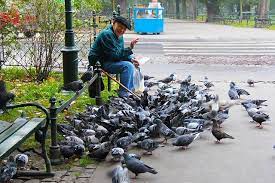
by Pigeon Patrol | May 25, 2021 | Pigeon Control, Pigeon Droppings, Pigeon Spikes, Pigeons
Some folks consider them an endearing part of urban life, others see them as an aggravation, but everyone recognizes this familiar wild neighbor. Pigeons may have been the first bird species to be domesticated, possibly as early as 6,500 years ago. The Egyptians used pigeons to carry the news of the coronation of Ramses III — more than 3,000 years before the United States was founded. Pigeons were well-equipped for this job, as they reach flight speeds of 15 to 60 miles per hour!
The rock dove, as the species also is known, is a European immigrant. Pigeons were introduced to North America by early European settlers. You’ll find pigeons in almost any city, town, or suburb on the continent. Their diet consists primarily of grains and seeds, along with insects and some greens — but pigeons aren’t terribly picky, and they’ll happily accept human food scraps and leftovers when available. From a pigeon’s point of view, city living can’t be beat. Food and water are readily available. Predators are few and far between. Plus, there’s plenty of free housing — pigeons like to live in large groups on window ledges, rooftops, bridges, and warehouses as these offer room for whole flocks to rest or take shelter in close proximity.
Family Life
Pigeons live in groups called “flocks.” Each flock has an equal number of male and female members. A courting male pursues his intended mate on the ground, circling her, with his neck feathers inflated and his tail spread, bowing and cooing all the while. Pigeons mate for life, but if one partner dies the survivor generally will attempt to find another mate.
Pigeons show a strong affinity for human-built structures. Nests, a haphazard combination of twigs, leaves, and a few feathers, are built on window ledges, behind signs, and under bridges. Parents take turns incubating the clutch of one or two white, unmarked eggs for between 16 and 19 days. After the eggs hatch, both parents feed the baby pigeons, or squabs, a crop secretion called “pigeon milk,” which is produced from the lining of the crop, a sac-like food storage chamber located under the bird’s esophagus. The milk is a highly nutritious and an efficient way of feeding young. Squabs fledge at four to six weeks of age but remain dependent on their parents for as long as the adults will tolerate them — generally another one or two weeks. Individuals may be capable of breeding at six months of age.
Pigeons leave their nesting and roosting sites during daylight hours to search for food, but they return at night, as well as periodically during the day when raising young.
Found an injured or orphaned pigeon?
Wildlife rehabilitation centers provide care for injured and orphaned wildlife until the animal can be released back to the wild. In most states, wildlife rehabilitation can be practiced only with a state and/or federal license.
Adult pigeons may suffer from broken bones, parasite infestations, and diseases, some of which may present a human health hazard. Without proper intervention, these birds may die from their injuries or be permanently disabled. Rehabilitators receive the special training needed to assess these problems and offer appropriate aid.
Baby pigeons may be covered with sparse, fuzzy down or spiky, emerging feathers, and their beaks can look rather deformed. Like all other infants, squabs have unique nutritional requirements. Baby bird food available at pet stores may claim to be appropriate for all birds, but this is simply not true. Furthermore, squabs must be fed through a tube inserted into their crop several times a day – a risky procedure even for experienced wildlife rehabilitators. Problems that result from an inappropriate diet, such as metabolic bone disease (also known as rickets), can debilitate an animal for life.
If you’ve found a pigeon in need of assistance, contact a wildlife rehabilitator.
Read more about orphaned or injured wildlife.
POSSIBLE CONFLICTS & SOLUTIONS
At first glance, the arrangement we have with pigeons appears to be ideal; we provide room and board and in return the birds add a little warmth and color to our cold concrete canyons. So what’s the problem? In a word — droppings.
Not only is pigeon poop unsightly, it can damage buildings, monuments, and automobiles, and if allowed to accumulate, human health problems may arise. A little patience and understanding go a long way toward resolving these problems. Removing the animals in question may seem like an obvious answer. The truth, however, is that results with this approach are short-lived because removal simply creates a vacancy that other animals quickly fill. Humane conflict prevention and resolution is less expensive and more effective in the long run. People can live in harmony with wildlife – you just have to know your wild neighbors!
Roost inhibitors, distress call devices, predator-shaped kites and scarecrows, and netting are effective and humane ways to prevent and/or solve most conflicts with pigeons. Go to our humane exclusion resources page to find vendors that sell these devices.
PUBLIC HEALTH CONCERNS
Pigeons are known carriers of cryptococcus and salmonella. However, there is little evidence linking pigeons directly to infections in humans.
Information about humane prevention of pigeon conflicts was prepared by Kieran Lindsey, Natural Assets Consulting, and reviewed by Richard F. Johnston, Ph.D., Professor Emeritus, Natural History Museum, University of Kansas.
Source
Pigeon Patrol Products & Services is the leading manufacturer and distributor of bird deterrent (control) products in Canada. Pigeon Patrol products have solved pest bird problems in industrial, commercial, and residential settings since 2000, by using safe and humane bird deterrents with only bird and animal friendly solutions. At Pigeon Patrol, we manufacture and offer a variety of bird deterrents, ranging from Ultra-flex Bird Spikes with UV protection, Bird Netting, 4-S Bird Gel and the best Ultrasonic and audible sound devices on the market today.
Voted Best Canadian wholesaler for Bird Deterrent products ten years in a row.
Contact us at 1- 877– 4– NO-BIRD, (604) 585-9279 or visit our website at www.pigeonpatrol.ca
Pigeon/Pigeon Patrol / Pigeons Roosting / Vancouver Pigeon Control /Bird Spikes / Bird Control / Bird Deterrent / Pigeon Deterrent? Surrey Pigeon Control / Pest /Seagull deterrent / Vancouver Pigeon Blog / Birds Inside Home / Pigeons in the cities / Ice Pigeons/ What to do about pigeons/ sparrows , Damage by Sparrows, How To Keep Raccoons Away, Why Are Raccoons Considered Pests/ De-fence / Pigeon Nesting/ Bird Droppings / Pigeon Dropping/ woodpecker control/ Professional Bird Control Company/ Keep The Birds Away/ Birds/rats/ seagull/pigeon/woodpecker/ dove/sparrow/pidgeon control/pidgeon problem/ pidgeon control/flying rats/ pigeon Problems/ bird netting/bird gel/bird spray/bird nails/ bird guard


